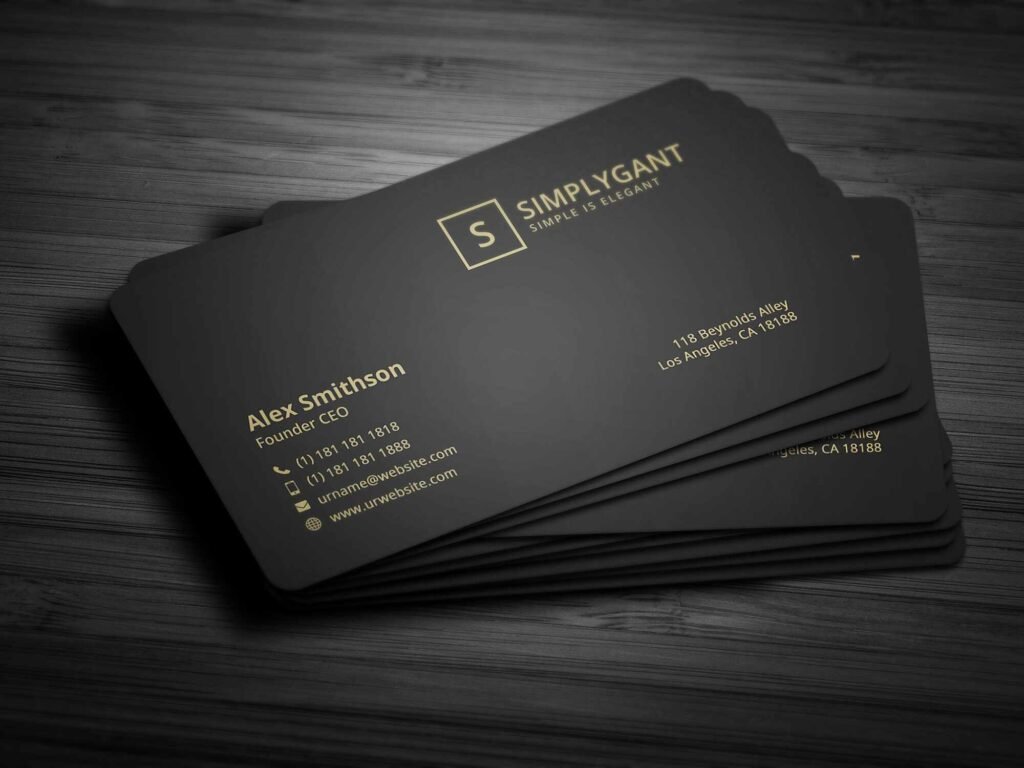You may have great content, but if it’s not structured right, your potential leads might not stick around to see it. In SEO-driven campaigns, content structure plays a vital role not only in ranking on search engines but also in guiding visitors to take action. The way you organize and present your content can determine whether visitors just skim through or engage deeply and eventually convert into leads.
This article dives into how content structure affects lead conversion rates, and it provides actionable strategies to optimize your layout for more conversions.
Why Content Structure Matters for Lead Conversion
The Journey from Search Result to Lead
When users click on a search result, they’re expecting to find quick answers or solutions to their problems. A well-structured piece of content immediately makes it clear to the visitor that they’re in the right place. Proper structure not only helps with SEO but also makes content easy to navigate, keeps visitors engaged, and guides them naturally toward conversion points like forms or CTAs (calls to action).
In SEO-driven campaigns, where the competition for attention is fierce, a strong content structure can make all the difference. Structured content helps build trust, improves readability, and encourages longer on-page time—all factors that contribute to higher conversion rates.
Step 1: Understand User Intent to Guide Your Structure
Align Content Structure with Visitor Needs
One of the biggest factors in effective content structure is user intent. When you know what visitors are searching for, you can create a structure that provides the answers they need quickly and easily. For example, someone searching for “how to choose CRM software” is looking for guidance and comparisons, so a step-by-step layout with clear sections is ideal.
Start by determining the intent behind the keywords you’re targeting. Are users looking to learn, compare options, or make a purchase? Once you understand their intent, structure your content to meet those needs. If visitors can find what they’re looking for easily, they’re more likely to stay, explore further, and convert.
Map Out the Content Journey
Think of your content as a journey that guides visitors from curiosity to action. Map out the path you want them to take, starting from their initial question and leading to a CTA. For instance, begin with an engaging introduction, follow with sections that provide relevant insights, and end with a CTA that matches their level of interest.
By designing your content journey based on user intent, you create a flow that aligns with their needs and encourages them to move toward conversion points naturally.
Step 2: Use Clear Headers and Subheaders for Easy Navigation

Make Headers Descriptive and User-Centric
Headers and subheaders are essential in breaking down content into easily digestible sections. For readers, headers act as guideposts, allowing them to scan and locate the information they need quickly. For SEO, headers help search engines understand the organization and relevance of your content.
For instance, instead of using a vague header like “Tips,” make it more specific, like “Effective Tips for Choosing CRM Software.” A clear, descriptive header reassures readers that they’re in the right place and motivates them to continue reading. Effective headers improve readability and help visitors stay engaged, leading them naturally toward CTAs.
Use a Hierarchical Structure (H1, H2, H3) to Build Flow
A logical hierarchy (H1, H2, H3) enhances both readability and SEO by creating a clear structure that search engines and readers can follow. Your H1 should be your main headline, introducing the core topic. Subsections (H2 and H3) should expand on this topic in an organized way.
For example:
- H1: The main topic, like “How to Choose the Right CRM for Your Business”
- H2: Subsections, such as “Key Features to Look For” or “Comparing CRM Pricing Models”
- H3: Detailed points under each subsection, such as “Importance of Scalability” or “Hidden Costs to Consider”
This structure not only helps readers scan the page but also keeps them engaged, increasing the chances they’ll continue through to your CTA.
Step 3: Optimize Readability for Quick Comprehension
Break Up Text with Short Paragraphs
Long blocks of text can be overwhelming, especially for visitors who are just skimming. By breaking up your content into short paragraphs, you make it easier for readers to absorb information without feeling bogged down. Each paragraph should introduce one idea or point, creating a sense of flow and simplicity.
For instance, instead of writing an extensive paragraph that explains all the benefits of CRM, break it down into individual points. Short paragraphs keep the reader’s attention, making them more likely to stay on the page and engage with your content.
Use Bullet Points and Numbered Lists Sparingly but Strategically
While lists can enhance readability, overusing them can make the content feel too fragmented. Use bullet points and numbered lists only when they add value, such as when summarizing key benefits or outlining steps. These elements are most effective when used sparingly to emphasize important points.
For example, if you’re listing the main features of CRM software, a brief, well-spaced bulleted list works well. Afterward, return to full paragraphs for more detailed explanations. This balanced approach improves readability and keeps the content engaging without sacrificing depth.
Step 4: Place Calls-to-Action (CTAs) Intelligently
Match CTA Placement with Content Flow
One of the most common mistakes in content structuring is placing CTAs too early or too late. CTAs work best when they appear at natural points within the content where the reader has been primed for action. If someone is reading an article about “Top CRM Solutions for Small Businesses,” a CTA like “Get a Free CRM Consultation” should ideally appear right after you discuss the benefits of a specific solution.
Placing CTAs strategically within the content makes them feel like a natural next step rather than a forced interruption. For instance, position a CTA at the end of a relevant section or after a key insight, where the reader is already thinking about taking the next step.
Use Inline CTAs to Maintain Flow
Inline CTAs are subtle calls to action that don’t disrupt the content flow. Instead of interrupting readers with pop-ups, an inline CTA blends into the paragraph. It’s a softer approach that’s particularly useful for readers who may not be ready to take immediate action but could be persuaded with a gentle prompt.
For example, within a paragraph discussing CRM benefits, add a line like, “Looking for the perfect CRM for your team? Check out our free guide here.” Inline CTAs encourage engagement without breaking the reader’s immersion, increasing the chance of conversion.
Step 5: Incorporate Visual Elements for Engagement

Add Relevant Images and Graphics to Support Key Points
Visual elements like images, infographics, and charts make content more engaging and help illustrate complex points. For SEO and lead generation, relevant visuals break up the text, making it easier for users to digest information. Infographics that summarize data or charts comparing product features are particularly effective in boosting engagement and comprehension.
For instance, in a piece about “How CRM Boosts Sales Efficiency,” an infographic illustrating key metrics like conversion rate improvement or time saved can make the message clearer. This visual context enhances the reader’s understanding and keeps them engaged, making them more likely to follow through to your CTA.
Use Video Content to Deepen Engagement
Video content is increasingly popular for enhancing engagement, especially for more complex topics. Adding a short explainer video, product demo, or customer testimonial can keep visitors on the page longer, increasing the likelihood of conversion. Videos help simplify information that might otherwise require long explanations, giving visitors a faster way to understand your offer.
For example, a video explaining “How Our CRM Works” can give visitors a quick overview of benefits and features, motivating them to take the next step. Video content captures attention, builds interest, and often leads to higher engagement, making it a powerful addition to your content structure.
Step 6: Use Internal Linking to Guide Users Through the Funnel
Link to Relevant Content to Keep Users Engaged
Internal links are essential for directing visitors to additional content that deepens their engagement with your site. When done strategically, internal links create a content journey that keeps readers moving through your site, from one piece of content to the next, toward conversion.
For instance, if your article on “Benefits of CRM” has a section on pricing, link it to another article titled “How to Budget for CRM Software.” This approach encourages users to explore related topics, boosting on-site time and increasing the likelihood of conversion.
Use Descriptive Anchor Text to Make Links Clear
For internal links to be effective, the anchor text (the clickable part of the link) should clearly indicate what the reader can expect. Avoid generic phrases like “click here” and use descriptive text that aligns with the linked content, such as “Explore our CRM pricing options” or “Learn how CRM improves productivity.”
Descriptive anchor text improves user experience by making the next step clear, keeping visitors engaged, and guiding them naturally through your site.

Related: Check out our free tools:

Step 7: Focus on Mobile Optimization for Lead Generation
Ensure Mobile-Friendly Design
A growing number of visitors access content on mobile devices, making mobile optimization essential. Ensure your content structure is responsive and adapts seamlessly to various screen sizes. Mobile-friendly design includes larger fonts, streamlined navigation, and easy-to-tap buttons that enhance the user experience.
For example, avoid cluttering mobile pages with excessive images or forms. Instead, prioritize essential elements and create a smooth, intuitive layout. A mobile-optimized site makes it easier for users to navigate and find what they need, increasing the likelihood they’ll stay and convert.
Simplify Forms and CTAs for Mobile Users
For mobile users, long forms and small CTAs can be challenging to engage with. Simplify forms to capture only the most necessary information and use larger, mobile-friendly CTA buttons. Reducing friction for mobile users helps increase conversions, especially for high-intent visitors on the go.
For example, if your goal is to capture leads, ask only for basic information, like name and email, instead of a lengthy form. This approach minimizes obstacles for mobile users, improving the chance they’ll complete the form and convert.
Step 8: Track and Adjust Content Structure Based on Analytics

Monitor Key Engagement Metrics
To understand the effectiveness of your content structure, track key engagement metrics like time on page, bounce rate, and scroll depth. These metrics indicate how well your content is holding attention and guiding users toward CTAs. High engagement levels suggest that your structure is effective, while low metrics might signal a need for improvement.
For instance, if users frequently bounce from a specific section, consider revising that part of the content or breaking it up into smaller, digestible pieces. Analytics provide actionable insights to refine your structure for better engagement and conversions.
Test Different Layouts to Optimize for Conversion
Content structure isn’t a one-size-fits-all approach. Conduct A/B tests with different layouts, CTA placements, or section orders to see what resonates best with your audience. Testing reveals which structural changes lead to better engagement and higher conversions, helping you fine-tune your content for maximum impact.
For example, test the position of your CTA: placing it after a key section vs. at the end of the article. Regular testing and refinement ensure your structure remains optimized for lead generation and aligns with audience preferences.
Step 9: Incorporate Social Proof to Build Trust Within Your Content Structure
Position Testimonials and Case Studies at Key Points
Social proof, such as testimonials and case studies, reinforces credibility and builds trust with readers who are new to your brand. These elements work best when placed at strategic points within your content—like before a CTA or following a key section that discusses benefits or product features. By seeing real-world examples of others who have succeeded with your product or service, potential leads are more likely to trust your offer.
For example, if your content is about “How CRM Can Boost Productivity,” include a brief case study of a client who saw significant productivity gains using your CRM. Position it just before a CTA for a free trial, so it naturally flows into the action you want the reader to take. Thoughtfully placed social proof can be the extra nudge that converts an interested reader into a lead.
Use Real Numbers to Make Testimonials More Persuasive
Whenever possible, use metrics and concrete data within testimonials to make them more impactful. Specific numbers—like “increased sales by 35%” or “saved 10 hours per week”—provide tangible proof of value. These quantifiable results make your product more compelling and give high-intent readers clear evidence of how it can benefit them.
For instance, if a client testimonial states, “We saw a 40% increase in customer engagement within three months of using [Product],” place it prominently within a section discussing similar benefits. This makes the social proof relevant, helping potential leads envision the same success for themselves.
Step 10: Use Content Upgrades to Capture Leads Within the Flow
Offer Content Upgrades that Add Immediate Value
Content upgrades—bonus materials like downloadable guides, templates, or checklists—are powerful tools for capturing leads right within your content. When readers are deeply engaged with your content, a relevant upgrade offered at the right moment can prompt them to share their contact information. Make sure your content upgrade aligns directly with the topic to enhance its value.
For example, if your content is about “How to Streamline Sales Processes with CRM,” offer a downloadable checklist on “10 Steps to Automate Your Sales Workflow.” This content upgrade flows naturally with the main topic, enhancing the reader’s experience while providing you with lead-capture opportunities.
Embed Content Upgrades as Inline CTAs
Rather than using pop-ups that might disrupt the reading experience, embed content upgrades within the content as inline CTAs. For example, after a relevant paragraph, add a line like, “Download our free CRM optimization checklist here.” This inline approach keeps the CTA part of the natural reading flow, making it more appealing and less intrusive for readers who are already interested in the topic.
This seamless integration keeps readers engaged while encouraging them to act without feeling pressured, improving the likelihood of conversions.
Step 11: Ensure Consistent Branding Throughout the Content

Use a Consistent Tone and Style to Build Trust
Maintaining a consistent tone and style across your content helps reinforce your brand’s identity and builds trust. If your brand is known for being approachable and supportive, ensure that your content reflects this through conversational language and helpful advice. On the other hand, if your brand’s tone is more authoritative, maintain that tone to establish credibility.
For instance, if you’re writing for a tech-savvy audience, avoid overly simplistic language and focus on technical benefits. Consistency in tone and style creates a cohesive experience that feels authentic, which can make readers more comfortable engaging with your CTAs and completing conversions.
Apply Visual Branding for a Professional Look
In addition to tone, visual branding—like color schemes, fonts, and logo placements—helps reinforce brand recognition. Use your brand’s colors for headers, CTAs, and visuals within the content. This visual continuity helps build familiarity, making the experience more professional and memorable.
For example, if your CTA buttons use a signature brand color, keep that color consistent throughout the content and on landing pages to create a smooth journey. Readers who see familiar branding throughout are more likely to feel comfortable and convert.
Step 12: Optimize for Voice Search and Conversational Queries
Structure Content to Answer Questions Naturally
With the rise of voice search, more users are asking conversational questions. Structuring your content to answer these questions naturally can improve both SEO and engagement. Write in a conversational style, and include question-based headers like “How does CRM improve productivity?” to match the way people speak.
These question-oriented headers not only help with SEO but also engage readers by directly addressing their concerns. For instance, placing “What Features Make a Good CRM?” as a header can draw in readers who want specific answers, increasing engagement and conversion potential.
Target Long-Tail Keywords that Reflect Conversational Searches
Long-tail keywords, which are more specific and often resemble natural language, are increasingly valuable as people use voice search. For example, instead of targeting “CRM software,” target phrases like “best CRM software for small businesses” or “how does CRM improve sales?” These longer, question-based keywords align with conversational search trends and bring in visitors who are further along in their decision-making process.
By targeting these long-tail keywords and structuring content to answer them clearly, you attract high-intent users who are more likely to engage deeply and convert.
Final Thoughts: Structuring Content to Drive Conversions
Content structure goes beyond making your content look neat; it’s a strategic approach to enhancing engagement and guiding visitors toward conversion. By organizing your content around user intent, using clear headers, strategically placing CTAs, and optimizing for mobile, you create a seamless experience that holds visitors’ attention and encourages action.
Remember, closing the gap between SEO-driven traffic and lead conversion is a continuous process. Use analytics to track user behavior, test various structural elements, and make data-driven adjustments to keep improving. With a well-structured approach, you can turn more of your SEO traffic into valuable leads, ensuring that your content works as a powerful tool for growth.
READ NEXT:
- Are Vanity Metrics Killing Your Marketing Efficiency? Here’s What to Track Instead
- Pinpointing Digital Marketing ROI: Why Your Metrics Aren’t Telling the Full Story
- Unlocking Real ROI in Digital Marketing: The Hidden Costs Draining Your Budget
- How Misaligned Marketing Funnels Are Blocking Your ROI Potential
- Best Digital Marketing Agency In Santa Ana, California
- Best Digital Marketing Agency In San Francisco, California





















